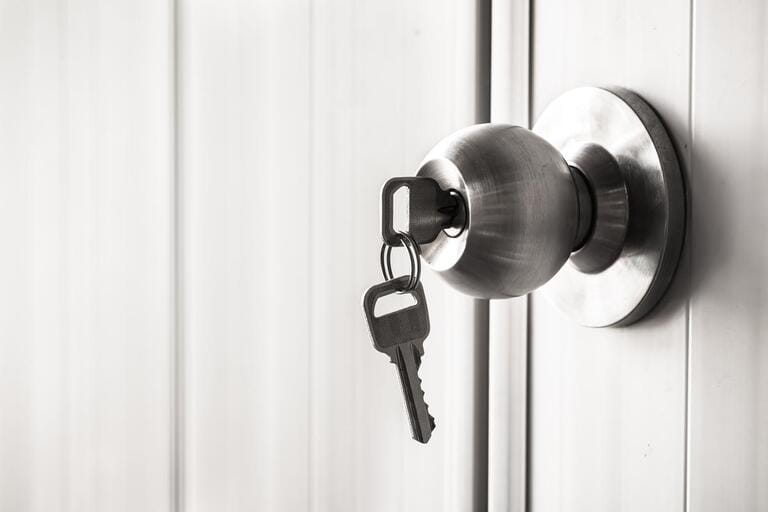When it comes to securing your home or office, having the right door lock is essential. With a variety of options available, it can be overwhelming to choose the best lock for your needs. Different types of door locks offer various levels of security, convenience, and functionality. In this comprehensive guide, we will explore the most common types of door locks, their features, and their suitability for different applications. By understanding the options available, you can make an informed decision and enhance the safety and security of your space.
Different Types Of Door Locks
1. Deadbolt Locks
Deadbolt locks are one of the most common and secure types of door locks. They offer excellent resistance to forced entry due to their solid metal construction and bolt mechanism. Deadbolts come in three main variations:
Single Cylinder Deadbolt: This type of deadbolt has a key cylinder on the outside and a thumbturn on the inside. It allows you to lock and unlock the door from both sides. Single cylinder deadbolts are suitable for exterior doors.
Double Cylinder Deadbolt: Double cylinder deadbolts have key cylinders on both the inside and outside of the door. This adds an extra layer of security but requires a key to lock and unlock the door from both sides. Double cylinder deadbolts are commonly used on doors with glass panels to prevent intruders from reaching in and unlocking the door.
Keyless Deadbolt: Keyless deadbolts utilize electronic keypads or biometric mechanisms for entry instead of traditional keys. They offer convenience, as you can enter the code or use your fingerprint to unlock the door. Keyless deadbolts are suitable for both residential and commercial applications.

2. Knob Locks
Knob locks are widely used in residential settings, particularly for interior doors. They feature a lock cylinder in the knob itself, making them easy to operate. However, knob locks are not suitable for external doors as they are more susceptible to forced entry due to their exposed screws and lack of a deadbolt.
To enhance security, it's recommended to use knob locks in conjunction with a deadbolt lock or as secondary locks on interior doors within a property.

3. Lever Handle Locks
Lever handle locks are commonly found in commercial buildings, including offices, schools, and hospitals. They offer ease of use and comply with accessibility requirements. Lever handle locks have a large lever that is easier to grip and turn, making them ideal for individuals with limited dexterity.
Similar to knob locks, lever handle locks should be used in combination with deadbolts for optimal security, especially for external doors.

4. Mortise Locks
Mortise locks are heavy-duty locks that are recessed into the door itself, providing superior strength and security. They consist of a lock body, a lock trim or plate, and a cylinder or thumbturn. Mortise locks are commonly found in commercial and high-security residential applications.
One of the advantages of mortise locks is their ability to be customized with various cylinder types and trim designs. They offer a high level of resistance to forced entry, making them an excellent choice for securing external doors.

5. Cam Locks
Cam locks are small, cylindrical locks often used in cabinets, drawers, mailboxes, and furniture. They are relatively simple in design, consisting of a metal cylinder and a rotating cam mechanism. Cam locks are typically operated with a key, and they provide a moderate level of security for these specific applications.
While cam locks are not typically used as primary door locks, they are effective in securing smaller compartments within a space.

6. Smart Locks
Smart locks are a modern innovation that combines convenience, technology, and security. They offer keyless entry and can be controlled remotely through a smartphone or other connected devices. Smart locks can be operated through various methods, including numeric codes, key fobs, or biometric authentication.
One of the main advantages of smart locks is the ability to grant temporary access to individuals, monitor access history, and receive notifications of entry or attempted entry. They are suitable for both residential and commercial applications, offering convenience and enhanced security.

7. Padlocks
Padlocks are portable locks that can be attached to doors, gates, storage units, or other items requiring security. They consist of a shackle that can be opened and closed with a key, combination, or in some cases, a digital code. Padlocks come in various sizes, materials, and levels of security.
Padlocks are versatile and can be used in different settings where temporary or additional security is needed. They are often used in conjunction with other door locks for added protection.

Conclusion
Choosing the right type of door lock is crucial for maintaining the security of your home or office. By understanding the different types of door locks available, their features, and their suitability for various applications, you can make an informed decision.
Consider the level of security required, the type of door or application, and the convenience features that best fit your needs. It's often recommended to combine different types of locks, such as a deadbolt lock with a knob lock or a mortise lock with a smart lock, for enhanced security.
Remember to consult with a professional locksmith or security expert to assess your specific needs and ensure that your chosen door locks meet industry standards and local building codes.
By investing in high-quality door locks and implementing appropriate security measures, you can enhance the safety and peace of mind for yourself, your family, or your business.











